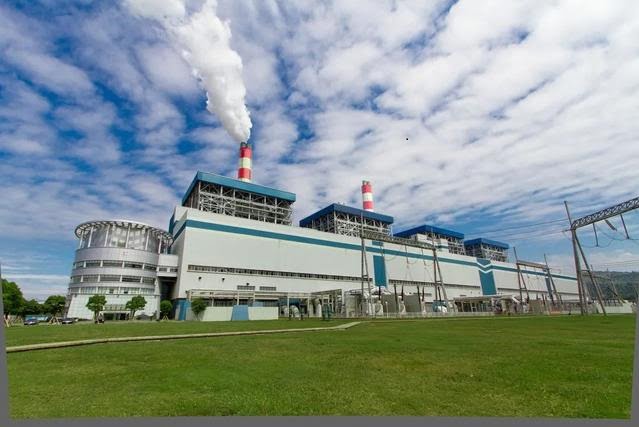Over the past 10 years, the newly added clean energy power generation has accounted for more than half of the total social electricity consumption increase. China’s energy transformation has achieved a new leap and breakthrough.
On August 29, the State Council Information Office released the white paper “China’s Energy Transformation”. At the press conference held on the same day, Zhang Jianhua, director of the National Energy Administration, and others introduced the relevant situation.
Energy transition investment reached US$676 billion last year, making an important contribution to the global green transition
Zhang Jianhua said that the white paper introduced the practical achievements of China’s energy transformation, which are mainly reflected in four “new” aspects.
A new leap forward in the development of clean energy. By the end of 2023, the installed capacity of wind power and photovoltaic power generation will have increased tenfold compared with 10 years ago, with clean energy power generation accounting for 58.2% of the total installed capacity, and the newly added clean energy power generation accounting for more than half of the total social electricity consumption increase. China’s energy content is constantly increasing.
New achievements have been made in the clean and efficient use of energy. Over the past 10 years, China has eliminated more than 100 million kilowatts of backward coal-fired power production capacity, and the pollutant emissions in the power industry have been reduced by more than 90%. The electrification rate of terminal energy consumption in the whole society has reached 28%. Compared with 2012, the cumulative energy consumption per unit of GDP has decreased by more than 26%.
A new breakthrough has been made in green energy technology. A full industrial chain R&D, design and manufacturing system for wind power and photovoltaic power has been established, and the large-scale third-generation pressurized water reactor and high-temperature gas-cooled reactor fourth-generation nuclear power technology have been fully mastered. The full industrial chain system of hydropower is leading the world.
New progress has been made in energy system reform. The diversified energy market structure has been gradually established, the unified and open energy market system has been gradually improved, and the energy price mechanism reflecting the market supply and demand relationship has been gradually formed. The market has played an increasingly prominent role in improving the level of clean energy consumption, ensuring power supply, and promoting the optimal allocation of resources.
Wan Jinsong, deputy director of the National Energy Administration, introduced that over the past 10 years, the total fixed asset investment in the energy field has reached about 39 trillion yuan. The total investment in the central budget for the transformation and upgrading of rural power grids exceeded 100 billion yuan, which has driven local governments and enterprises to increase capital investment, and historically solved the problem of electricity use for the population without electricity in 2015.
In 2023, China’s energy transformation investment reached 676 billion US dollars, making it the country with the largest energy transformation investment in the world. In 2023, the exported wind power and photovoltaic products helped other countries reduce carbon dioxide emissions by about 810 million tons. “China’s new energy industry has not only enriched the global supply and promoted the reduction of global energy transformation costs, but also made important contributions to the global green transformation and climate change response.” Wan Jinsong said.
The “dual carbon” goal is determined and unshakable, and the preliminary research of the “15th Five-Year Plan” is carried out as soon as possible
In 2020, my country proposed that by 2030, the total installed capacity of wind power and solar power generation will reach more than 1.2 billion kilowatts. As of the end of July this year, the total installed capacity of wind power and solar power generation has reached 1.206 billion kilowatts, achieving the goal six years ahead of schedule.
Li Chuangjun, director of the New Energy and Renewable Energy Department of the National Energy Administration, said that China’s commitment to the “dual carbon” goal is unshakable. It will be based on national conditions, adhere to the principles of fairness, common but differentiated responsibilities and respective capabilities, and scientifically plan and study new goals and new measures to make greater contributions to jointly responding to climate change and building a clean and beautiful earth.
Song Wen, director of the Legal System and Institutional Reform Department of the National Energy Administration, said that it will still take great efforts to achieve the “dual carbon” goal. The energy industry is speeding up the preliminary research of the “15th Five-Year Plan”, and will promote the high-quality development of new energy with greater efforts, carry out the green and low-carbon transformation of energy in a solid manner, and promote the average annual increase of the proportion of non-fossil energy consumption by about 1 percentage point.
The “Decision” of the Third Plenary Session of the 20th CPC Central Committee proposed to deepen the reform of the energy management system. Zhang Jianhua introduced that the energy reform will be deepened, the energy rule of law will be improved, planning guidance will be strengthened, and energy supervision will be strengthened.
In terms of deepening energy reform, the coverage of the electricity spot market will be continuously expanded through the construction of a national unified electricity market system, and the level of optimized allocation of electricity resources will be further improved. A green and low-carbon development mechanism will be established and improved, and the green electricity and green certificate market will be cultivated at a faster pace. New energy consumption and regulation policies will be improved, and non-fossil energy will be promoted to replace fossil energy safely, reliably and orderly. The independent operation of natural monopoly links and the market-oriented reform of competitive links will be promoted.
The total number of charging facilities reached 10.6 million, and the total installed capacity of nuclear power units approved for operation and construction ranked first in the world
Regarding the construction of electric vehicle charging infrastructure that everyone is concerned about, Wan Jinsong introduced that the National Energy Administration mainly carries out work from the aspects of “three improvements and two promotions”.
Improve the policy system. Issue policy documents such as the implementation opinions on further improving the service guarantee capacity of electric vehicle charging infrastructure, provide policy support and make specific work arrangements in terms of planning and layout, construction and operation, supporting power grids, price rewards and subsidies, etc.
Improve the charging network. As of the end of July, the total number of charging facilities in the country reached 10.6 million, effectively guaranteeing the charging needs of more than 25 million new energy vehicles. The public charging service radius in the central urban areas of first-tier cities is already equivalent to that of gas stations. At present, 95% of highway service areas have charging capabilities, and more than 1/3 of provinces have deployed charging facilities to all towns.
Improve the standard system. A total of 106 standards related to electric vehicle charging facilities have been issued, and the safety management level of the industrial chain has been further improved. The high-power DC charging standard is at the international leading level, and there have also been breakthroughs in the fields of wireless charging and charging roaming. A Chinese charging standard system that is on par with the United States, Europe, and Japan has been formed.
Promote the rapid upgrading of charging technology. A number of technical development routes have been formed, including conductive charging, battery replacement, and wireless charging. The DC charging power module has been fully localized, and the cost has dropped by 90% in the past five years. Promote the formation of an industrial ecosystem. Among charging station operators, the scale of private enterprise equipment accounts for more than 70%. Wan Jinsong introduced that the construction of a high-quality charging infrastructure system will be accelerated to help the green and low-carbon development of the transportation industry. “I believe that with the continuous improvement of the layout and service system of charging infrastructure construction, the phenomenon of slow charging and difficulty in charging in some areas and at certain times will be alleviated, and the charging experience of the majority of car owners will be more comfortable.” China actively develops nuclear power in a safe and orderly manner, and nuclear power technology has a complete industrial chain. There are currently 102 nuclear power units approved for operation and construction in the mainland, with a total installed capacity of more than 113 million kilowatts, ranking first in the world. The operating nuclear power units maintain a multi-generation and full-generation state, giving full play to the supporting role of base load power sources, with an installed capacity of less than 2% and a power generation of nearly 5%. Zhang Jianhua introduced that the development and safety will be coordinated to ensure a steady and orderly pace of construction, actively promote the comprehensive use of nuclear energy in heating, heating, steam supply, seawater desalination, etc., steadily increase the proportion of nuclear power in energy and electricity consumption, and provide strong support for promoting energy revolution and green and low-carbon development. It will also actively participate in global nuclear power construction, share China’s experience, and contribute to the global response to climate change.




